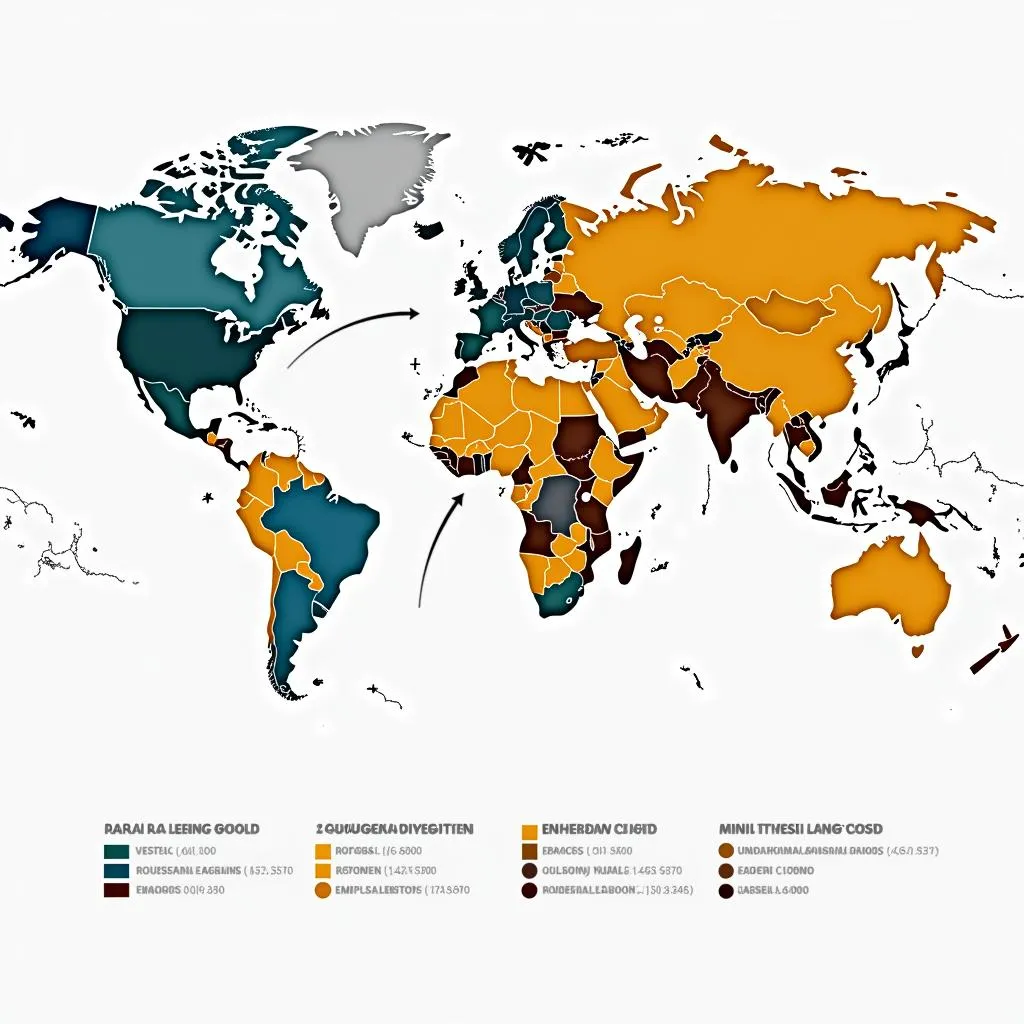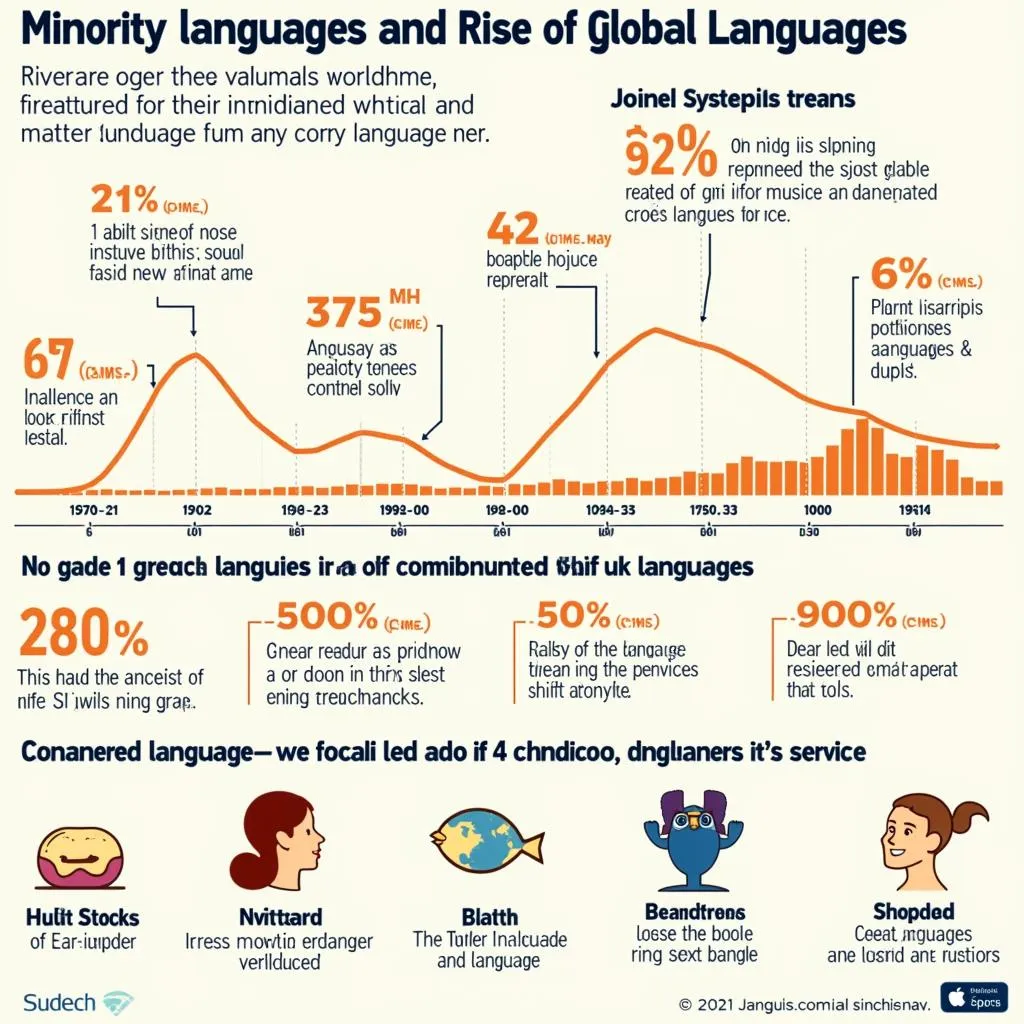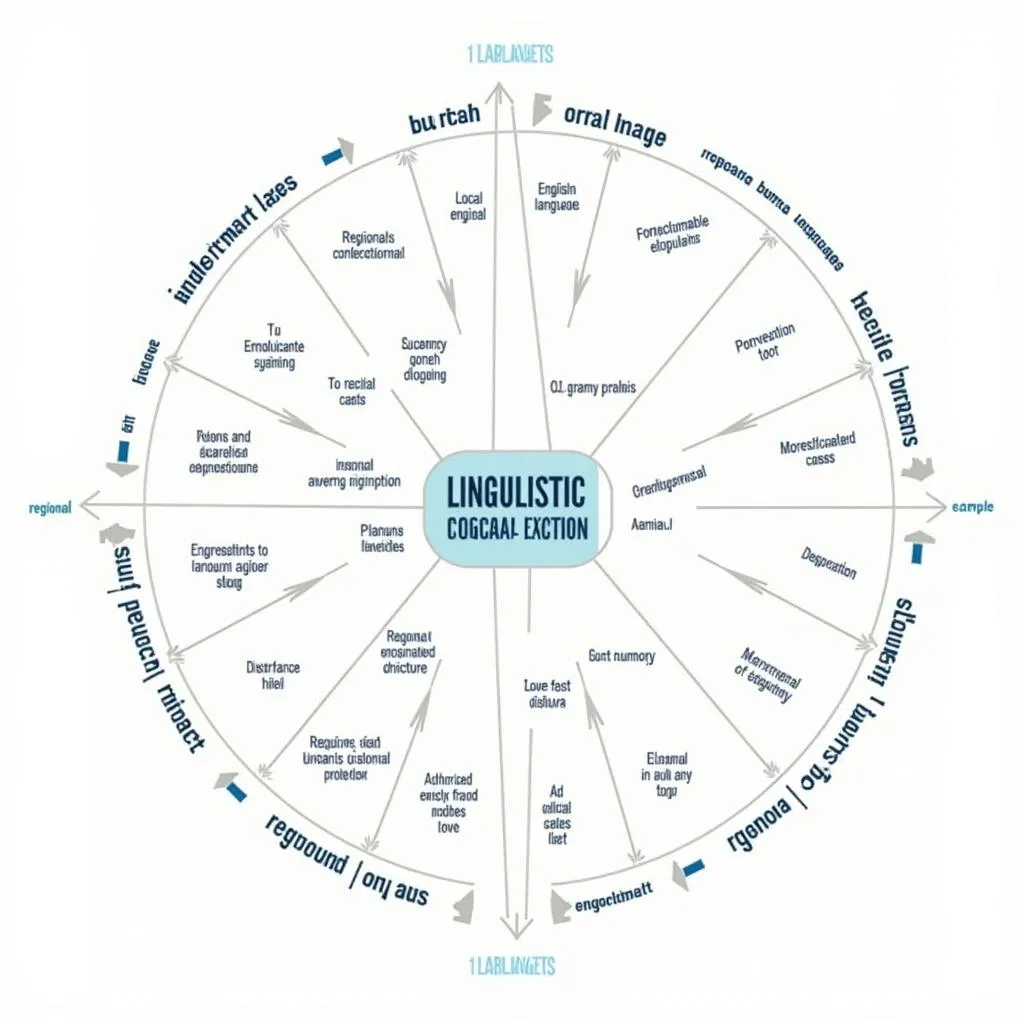Passage 1 – Easy Text
Globalization has had a profound impact on language diversity around the world. As international communication and trade increase, certain languages have become more dominant while others face decline. English, in particular, has emerged as a lingua franca in many global contexts, from business to academia.
This trend towards linguistic homogenization has both positive and negative consequences. On one hand, a common language facilitates easier communication across borders and cultures. It allows for greater exchange of ideas and collaboration on a global scale. Many argue that this linguistic convergence is necessary for international cooperation and economic development.
On the other hand, the rise of dominant languages often comes at the expense of local and indigenous languages. As younger generations prioritize learning globally useful languages, they may lose fluency in their native tongues. This can lead to the gradual erosion of linguistic heritage and the cultural knowledge embedded within languages.
Some linguists and anthropologists warn that we are facing a crisis of language extinction. They estimate that of the approximately 7,000 languages spoken today, nearly half are at risk of disappearing by the end of the century. The loss of these languages represents an irretrievable loss of cultural diversity and human knowledge.
 The impact of globalization on language diversity
The impact of globalization on language diversity
However, efforts are being made to preserve and revitalize endangered languages. Many communities are implementing language immersion programs and developing digital tools to document and teach their native tongues. Some countries have also enacted policies to protect linguistic minorities and promote multilingualism.
The impact of globalization on language diversity is complex and ongoing. While it poses challenges to linguistic diversity, it also creates new opportunities for cultural exchange and hybrid forms of expression. As we navigate this changing linguistic landscape, finding a balance between global communication and local language preservation remains a critical challenge.
The influence of cultural heritage on national curriculums highlights the importance of incorporating diverse linguistic and cultural elements into education systems. This approach can help maintain language diversity while preparing students for a globalized world.
Questions 1-7
Do the following statements agree with the information given in the Reading Passage?
Write
TRUE if the statement agrees with the information
FALSE if the statement contradicts the information
NOT GIVEN if there is no information on this
- Globalization has led to the dominance of certain languages over others.
- English is the most widely spoken language in the world.
- The trend towards linguistic homogenization has only positive consequences.
- Local and indigenous languages are at risk due to the rise of dominant languages.
- All 7,000 languages spoken today are at risk of extinction.
- There are no efforts being made to preserve endangered languages.
- Globalization creates opportunities for new forms of cultural expression.
Questions 8-13
Complete the sentences below.
Choose NO MORE THAN TWO WORDS from the passage for each answer.
- English has become a ___ in many global contexts.
- The loss of languages represents an irretrievable loss of ___ and human knowledge.
- Some communities are implementing ___ programs to preserve their languages.
- Finding a balance between global communication and local language preservation is a ___ challenge.
- The impact of globalization on language diversity is both ___ and ongoing.
- Some countries have enacted policies to protect ___ and promote multilingualism.
Passage 2 – Medium Text
The phenomenon of linguistic globalization is reshaping the world’s language landscape in unprecedented ways. As international borders become increasingly porous and digital communication connects people across vast distances, the dynamics of language use and transmission are undergoing rapid transformation. This shift is not merely a matter of which languages are spoken, but also how they are used, valued, and maintained in an interconnected global society.
One of the most significant impacts of globalization on language diversity is the acceleration of language shift and loss. In many communities, particularly those with smaller speaker populations or limited economic resources, there is a growing tendency for younger generations to adopt more widely spoken languages at the expense of their heritage tongues. This trend is often driven by practical considerations, such as improved economic opportunities or access to education. However, it can lead to a cascading effect of language attrition, where the intergenerational transmission of less dominant languages is disrupted.
Conversely, globalization has also facilitated the spread and reinforcement of certain languages on a global scale. English, in particular, has emerged as a de facto global language, serving as a common medium in international business, scientific research, and popular culture. This linguistic hegemony has both benefits and drawbacks. While it enables easier cross-cultural communication and access to a vast body of knowledge, it can also create pressure for non-native speakers to achieve proficiency, potentially at the cost of their own linguistic heritage.
 Language shift in the era of globalization
Language shift in the era of globalization
The impact of globalization on language diversity is not uniformly negative, however. Paradoxically, the same forces that threaten linguistic diversity also create new opportunities for language preservation and revitalization. Digital technologies and the internet have enabled small language communities to connect, share resources, and develop innovative ways to document and teach their languages. Online language learning platforms, social media, and digital archives are being leveraged to maintain and even revive languages that might otherwise be at risk of extinction.
Moreover, the global flow of people and ideas has led to the emergence of new linguistic phenomena. Code-switching, the practice of alternating between two or more languages in a single conversation, has become increasingly common in multilingual societies. This linguistic flexibility reflects the complex identities of global citizens and challenges traditional notions of language purity. Similarly, the rise of global Englishes – localized varieties of English that incorporate elements of indigenous languages – demonstrates how globalization can lead to linguistic innovation rather than mere homogenization.
The preservation of linguistic diversity in the face of globalization requires a multifaceted approach. Education systems play a crucial role in this effort. The influence of cultural heritage on national curriculums can help ensure that local languages and cultural knowledge are valued alongside global languages. Additionally, language policies that promote multilingualism and protect minority language rights are essential for maintaining linguistic ecosystems.
As we navigate the complexities of linguistic globalization, it is clear that the future of language diversity will depend on our ability to balance the need for global communication with the imperative of preserving the world’s rich linguistic heritage. This challenge requires not only policy interventions but also a shift in societal attitudes towards language diversity, recognizing it as a valuable resource rather than an obstacle to progress.
Questions 14-20
Choose the correct letter, A, B, C, or D.
-
According to the passage, linguistic globalization is:
A) Only affecting which languages are spoken
B) Changing how languages are used and valued
C) Solely responsible for language loss
D) Beneficial for all languages -
The text suggests that younger generations often adopt widely spoken languages because:
A) They dislike their heritage languages
B) It’s required by law
C) It can lead to better economic and educational opportunities
D) They are forced to by their parents -
The term “linguistic hegemony” in the passage refers to:
A) The equal status of all languages
B) The dominance of certain languages globally
C) The preservation of minority languages
D) The decline of English usage -
Which of the following is NOT mentioned as a way technology helps preserve languages?
A) Online learning platforms
B) Social media
C) Digital archives
D) Television broadcasting -
Code-switching is described in the passage as:
A) A sign of poor language skills
B) A practice exclusive to English speakers
C) A reflection of complex global identities
D) A threat to language purity -
The passage suggests that the preservation of linguistic diversity requires:
A) Focusing solely on dominant languages
B) Ignoring the effects of globalization
C) A multifaceted approach including education and policy
D) Eliminating the use of English globally -
The author’s stance on the future of language diversity can best be described as:
A) Optimistic
B) Pessimistic
C) Neutral
D) Cautiously hopeful
Questions 21-26
Complete the summary below.
Choose NO MORE THAN TWO WORDS from the passage for each answer.
Globalization is profoundly impacting language diversity worldwide. While it accelerates (21) and loss in some communities, it also facilitates the spread of certain languages globally. English has emerged as a (22) language, which has both advantages and disadvantages. However, globalization also creates opportunities for language preservation through (23) and the internet. New linguistic phenomena like (24) have emerged, reflecting the complex identities of global citizens. Preserving linguistic diversity requires a multifaceted approach, including education systems that value (25) alongside global languages. The future of language diversity depends on balancing global communication needs with preserving the world’s (26) .
Passage 3 – Hard Text
The interplay between globalization and language diversity presents a complex tapestry of linguistic evolution, cultural negotiation, and socioeconomic dynamics. As the world becomes increasingly interconnected, the fate of the estimated 7,000 languages spoken globally hangs in a delicate balance. This phenomenon, often termed “linguistic globalization,” is reshaping not only the distribution and vitality of languages but also the very nature of linguistic identity and communication in the 21st century.
At the forefront of this linguistic revolution is the unprecedented ascendancy of English as a global lingua franca. Its pervasive influence extends far beyond its role in international diplomacy and commerce, permeating academic discourse, technological innovation, and popular culture. This linguistic hegemony, while facilitating a degree of global cohesion, simultaneously exerts significant pressure on smaller language communities. The allure of socioeconomic mobility associated with English proficiency often catalyzes a shift away from indigenous languages, particularly among younger generations.
However, to view the impact of globalization on language diversity solely through the lens of English dominance would be reductionist. The reality is far more nuanced, with multiple linguistic currents at play. Regional lingua francas, such as Mandarin, Spanish, and Arabic, are experiencing their own expansions, creating complex linguistic hierarchies within and across national borders. This multi-tiered system of language influence contributes to what linguists term “glocalization” – the interaction between global and local linguistic forces.
 Linguistic glocalization in the modern world
Linguistic glocalization in the modern world
The impact of globalization on language diversity is not uniformly erosive. Paradoxically, the same technological advancements that have facilitated linguistic homogenization also offer unprecedented tools for language preservation and revitalization. Digital platforms enable small language communities to create and disseminate content, develop language learning resources, and connect speakers across geographic divides. This digital renaissance has breathed new life into many endangered languages, challenging the notion that globalization inevitably leads to linguistic extinction.
Moreover, the global flow of ideas and people has given rise to novel linguistic phenomena that defy traditional categorizations. The emergence of creolized languages, pidgins, and hybrid linguistic forms reflects the dynamic nature of language in a globalized context. These linguistic innovations serve as living testaments to the adaptability of human communication, blurring the lines between distinct language categories and challenging essentialist notions of linguistic purity.
The sociolinguistic landscape shaped by globalization has profound implications for identity formation and cultural expression. As individuals navigate multiple linguistic worlds, concepts of mother tongue and native speaker become increasingly fluid. Code-switching and translanguaging practices emerge not as deficiencies but as sophisticated communicative strategies that reflect the complex, multilayered identities of global citizens. This linguistic flexibility challenges monolingual paradigms and calls for a reevaluation of language education and policy.
The impact of cultural workshops on student empathy underscores the importance of fostering cross-cultural understanding in our increasingly globalized world. Such initiatives can play a crucial role in promoting linguistic diversity and multilingualism.
The preservation of language diversity in the face of globalization requires a multifaceted approach that transcends simplistic protectionist measures. It necessitates a paradigm shift in how we conceptualize language vitality and value. Rather than viewing languages as static entities to be preserved in isolation, there is a growing recognition of the need to support linguistic ecosystems that allow for dynamic interaction between global, regional, and local languages.
Educational systems play a pivotal role in this endeavor. The influence of cultural heritage on national curriculums can help ensure that indigenous languages and knowledge systems are valued alongside global languages. Multilingual education models that promote additive bilingualism rather than subtractive language shift offer promising pathways for nurturing linguistic diversity while preparing students for global engagement.
Policy interventions at national and international levels are equally crucial. Language rights must be recognized as fundamental human rights, with legal frameworks established to protect linguistic minorities and promote equitable language policies. The concept of “linguistic justice” is gaining traction, calling for a more nuanced understanding of language as a form of cultural capital and a means of accessing social and economic opportunities.
As we navigate the complexities of linguistic globalization, it becomes clear that the future of language diversity will be shaped by our collective ability to embrace a more holistic, ecological view of language. This perspective recognizes the interconnectedness of languages and the value of linguistic diversity not just as a cultural heritage but as a resource for human creativity, cognitive flexibility, and global understanding. The challenge lies in fostering a global linguistic ecology that allows for the coexistence and mutual enrichment of diverse languages, rather than a zero-sum game of linguistic dominance and extinction.
In conclusion, the impact of globalization on language diversity is neither uniformly positive nor negative but rather a complex process of negotiation and adaptation. As we move forward, the key lies in harnessing the connective power of globalization while safeguarding the rich tapestry of human linguistic heritage. This delicate balance will require innovative approaches to language policy, education, and technology, underpinned by a fundamental shift in how we perceive and value linguistic diversity in our increasingly interconnected world.
Questions 27-31
Choose the correct letter, A, B, C or D.
-
According to the passage, the concept of “linguistic globalization” refers to:
A) The dominance of English worldwide
B) The extinction of minority languages
C) The complex reshaping of global linguistic landscapes
D) The standardization of all languages -
The term “glocalization” in the context of linguistics refers to:
A) The exclusive use of local languages
B) The interaction between global and local linguistic forces
C) The complete replacement of local languages by global ones
D) The isolation of linguistic communities -
The passage suggests that technological advancements have:
A) Only contributed to language loss
B) Had no impact on language diversity
C) Both facilitated homogenization and offered tools for preservation
D) Exclusively benefited major languages -
The emergence of creolized languages and pidgins is presented as:
A) A threat to linguistic purity
B) Evidence of linguistic decline
C) A sign of linguistic innovation and adaptability
D) A phenomenon limited to specific regions -
The author’s view on the future of language diversity can be described as:
A) Pessimistic
B) Optimistic
C) Neutral
D) Advocating for a nuanced, ecological approach
Questions 32-36
Complete the summary below.
Choose NO MORE THAN TWO WORDS from the passage for each answer.
The impact of globalization on language diversity is complex, involving the rise of English as a (32) and the expansion of regional lingua francas. While this can lead to language shift, globalization also offers tools for language (33) through digital platforms. Novel linguistic phenomena like (34) reflect the adaptability of human communication. The preservation of language diversity requires a multifaceted approach, including educational systems that promote (35) and policy interventions that recognize language rights as (36) ___.
Questions 37-40
Do the following statements agree with the claims of the writer in the Reading Passage?
Write
YES if the statement agrees with the claims of the writer
NO if the statement contradicts the claims of the writer
NOT GIVEN if it is impossible to say what the writer thinks about this
- Globalization inevitably leads to the extinction of minority languages.
- Code-switching is a sign of linguistic deficiency.
- Educational systems should focus exclusively on global languages.
- Linguistic diversity should be viewed as a resource for human creativity and understanding.
Answer Key
Passage 1
- TRUE
- NOT GIVEN
- FALSE
- TRUE
- FALSE


